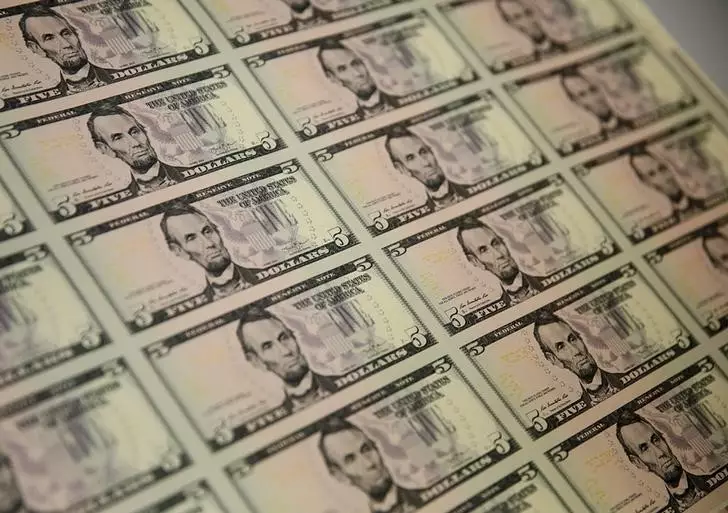The foreign exchange market presents a fascinating array of fluctuations and trends, particularly surrounding the status of the U.S. dollar (USD). Recent developments indicate a notable tug-of-war between bullish rebounds and apprehensive consolidations ahead of pivotal Federal Reserve communications. This article delves into the intricate landscape of USD performance, the implications of monetary policy decisions, and offers a broader economic context.
On a recent Thursday, the U.S. dollar exhibited a marginal decline, further solidifying its position in the wake of a significant overnight upswing. The Dollar Index, which gauges the strength of the USD against a basket of six major currencies, dipped by 0.1%, resting at 100.565. This retreat followed an impressive recovery, marking the dollar’s most substantial one-day increase since early June. The initial surge can be attributed to a market reassessment regarding the aggressiveness of upcoming rate reductions by the Federal Reserve, particularly following the considerable 50 basis-point cut announced earlier in the month.
The financial community is closely monitoring key speeches from Federal Reserve officials, which promise to shed light on the institution’s future monetary policy direction. While some policymakers express firm support for the current easing cycle, others maintain a more cautious stance. This disparity in views contributes to the ongoing volatility in the currency markets.
Federal Reserve Insights: Mixed Signals
A critical aspect influencing the movement of the dollar is the diverse commentary from Federal Reserve representatives. Fed Governor Adriana Kugler openly expressed support for the half-point rate cut, emphasizing the necessity of such measures in the current economic climate. Conversely, Governor Michelle Bowman advised a more tempered approach, underscoring the risks associated with rapid rate cuts. In this context, Atlanta Fed President Raphael Bostic warned against a hurried strategy to lower rates, advocating for a more thoughtful and measured response from the central bank.
Market analysts stress that the forthcoming speeches—especially from Chairman Jerome Powell—could provide crucial insights into the Fed’s strategic outlook. Each participant in the discussions will likely offer valuable perspectives that illuminate potential shifts in monetary policy, creating ripples across the financial markets.
The interplay of currencies against the backdrop of the USD’s performance reveals intriguing dynamics. For instance, the Euro (EUR) recently experienced a minor uptick against the dollar, stabilizing around 1.1132 after hitting a multi-month high of 1.1214. The EUR/USD pair’s movements appear restrained, largely governed by the relative calm in the eurozone’s economic agenda. Analysts predict that without decisive U.S. data, the pair may remain trapped within a narrow trading range.
In conjunction with EUR fluctuations, the British Pound (GBP) also displayed resilience. A slight increase against the dollar positioned GBP/USD at 1.3342, following a climb that had reached levels not seen since early 2022. These movements underscore a collective sentiment in the Forex market that is heavily influenced by regional economic indicators and anticipated data releases.
Notably, the Swiss National Bank recently declared a 25 basis-point cut to its benchmark interest rates, a move that, while anticipated, reflects a strategic response to the country’s inflationary environment. Following this decision, the USD/CHF pair dipped, signaling traders’ cautious optimism in the Swiss economy. The contrast in monetary policy between Switzerland and the U.S. adds another layer of complexity to currency interactions.
Meanwhile, the Chinese yuan (CNY) has remained under pressure as Beijing announced a series of stimulus measures aimed at revitalizing economic growth. The USD/CNY rate has seen a slight decrease, indicating a strengthening local currency in response to government initiatives designed to spur economic activity.
The Road Ahead for the U.S. Dollar
With a plethora of economic data anticipated—including updates on GDP growth and jobless claims—the state of the U.S. dollar hangs in the balance. Market participants are poised to react, shaping the currency landscape of the near future. Amid these evolving circumstances, it is evident that the dollar’s trajectory is inextricably linked to Federal Reserve policy stances and economic signals.
The current state of the U.S. dollar reflects a complex interplay of domestic monetary policy shifts and international economic factors. Traders and policymakers alike must navigate this intricate landscape with caution, as the implications of these decisions resonate far beyond immediate market reactions.

